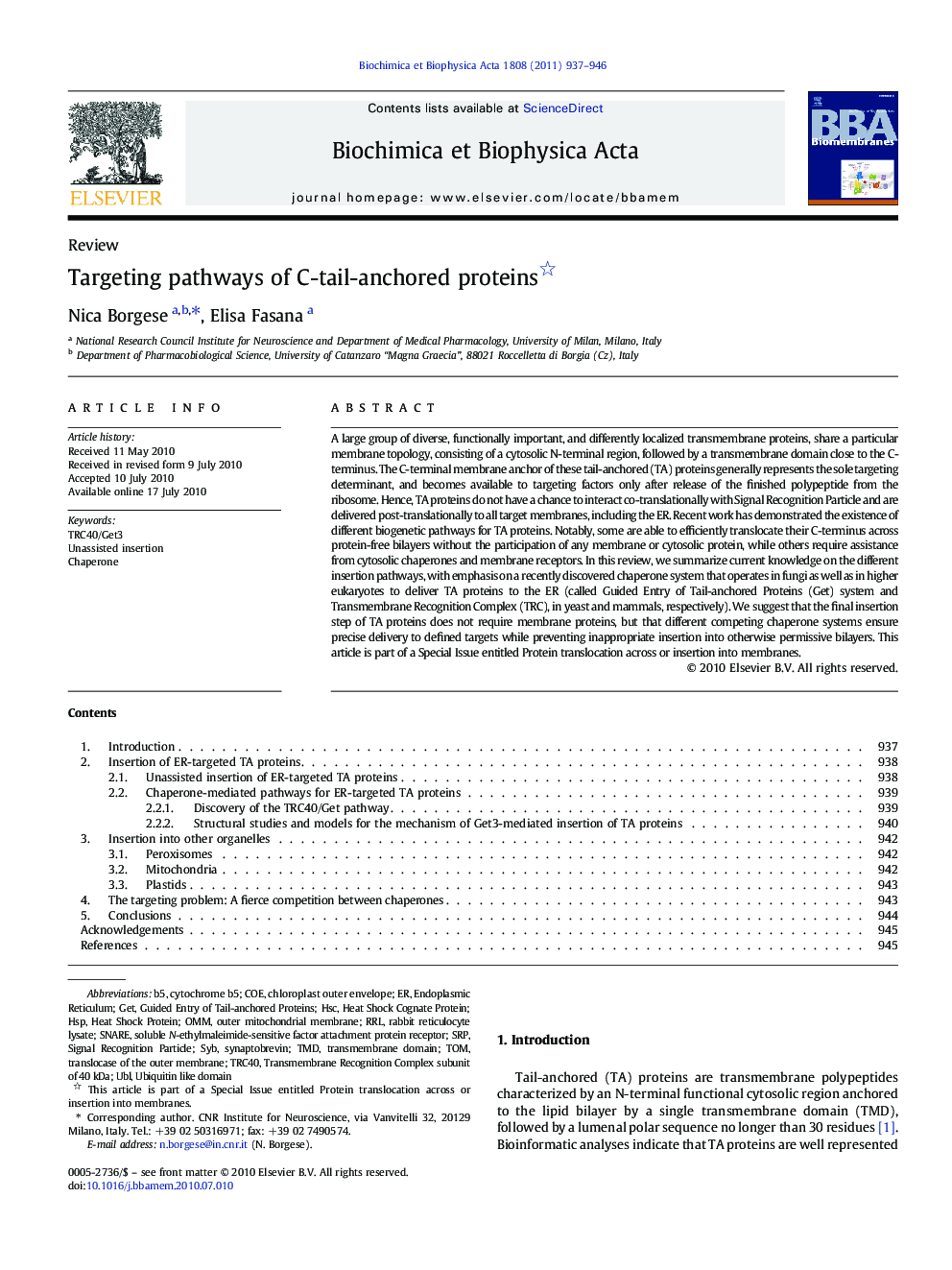| Article ID | Journal | Published Year | Pages | File Type |
|---|---|---|---|---|
| 10797830 | Biochimica et Biophysica Acta (BBA) - Biomembranes | 2011 | 10 Pages |
Abstract
A large group of diverse, functionally important, and differently localized transmembrane proteins, share a particular membrane topology, consisting of a cytosolic N-terminal region, followed by a transmembrane domain close to the C-terminus. The C-terminal membrane anchor of these tail-anchored (TA) proteins generally represents the sole targeting determinant, and becomes available to targeting factors only after release of the finished polypeptide from the ribosome. Hence, TA proteins do not have a chance to interact co-translationally with Signal Recognition Particle and are delivered post-translationally to all target membranes, including the ER. Recent work has demonstrated the existence of different biogenetic pathways for TA proteins. Notably, some are able to efficiently translocate their C-terminus across protein-free bilayers without the participation of any membrane or cytosolic protein, while others require assistance from cytosolic chaperones and membrane receptors. In this review, we summarize current knowledge on the different insertion pathways, with emphasis on a recently discovered chaperone system that operates in fungi as well as in higher eukaryotes to deliver TA proteins to the ER (called Guided Entry of Tail-anchored Proteins (Get) system and Transmembrane Recognition Complex (TRC), in yeast and mammals, respectively). We suggest that the final insertion step of TA proteins does not require membrane proteins, but that different competing chaperone systems ensure precise delivery to defined targets while preventing inappropriate insertion into otherwise permissive bilayers. This article is part of a Special Issue entitled Protein translocation across or insertion into membranes.
Keywords
HSCSRPUblHspSNAREChaperoneToMOMMTMDRRLtranslocase of the outer membranetransmembrane domainsignal recognition particlerabbit reticulocyte lysateSybcytochrome b5Synaptobrevinendoplasmic reticulumouter mitochondrial membraneCoeHeat shock proteinheat shock cognate proteinGETsoluble N-ethylmaleimide-sensitive factor attachment protein receptor
Related Topics
Life Sciences
Biochemistry, Genetics and Molecular Biology
Biochemistry
Authors
Nica Borgese, Elisa Fasana,
